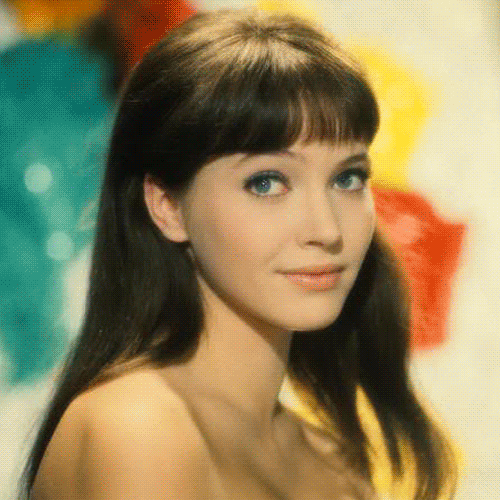When you think of Paris in the early part of the twentieth century, you may not immediately think “great films!” Mostly because, well, movies with sound or color weren’t being made at this point in time and, frankly, as a person living in 2011, there must be a great deal of sound and color to accompany my sitting down for two hours to stare at a huge screen. Luckily, brilliant filmmakers have been mining this fertile ground of movie-making for decades since–and the French know how to make an experimental, influential film. As part of PIFA, this April, the Bryn Mawr Film Institute is bringing you four killer tomes for your viewing pleasure. Let’s just go chronologically through them, shall we?

Tuesday, April 5: Jules and Jim
This one’s widely regarded as one of France’s finest cultural achievements. Released in 1962, it’s the semi-autobiographical tale of Henri-Pierre Roche‘s relationship with the writer Franz Hessel and his wife, Helen Grund. François Truffaut directed this gut-wrenching tale of best friends torn apart by war and a woman, set in several countries throughout Europe, over the course of a few decades. Jules (Oskar Werner) is a writer whose fascinations with an emerging bohemian lifestyle and the world of art are drawn out by the extroverted Jim (Henri Serre). The two become best friends who fall in love with the same woman, the ravishing and free-spirited Catherine (played by the rapturous Jeanne Moreau). The film is a landmark of French New Wave cinema and the entanglements of love, friendship, war, and the human spirit are as potent as they were nearly 50 years ago.

Tuesday, April 12: The Passion of Joan of Arc
Joan’s story is one of the most fascinating in all of French history. Now, officially, she is Saint Joan of Arc (or Jeanne d’Arc, for those who know) and she was burned at the stake before she could turn 20. She is now widely regarded as one of the patron saints of France, and her life has been depicted in hundreds of mediums and by thousands of artists. This particular film is a silent one, shot in 1928, and directed by Carl Theodor Dreyer. Renee Jeanna Falconetti stars as Joan, and turns in what is largely considered one of the most powerful female performances in cinematic history. Shot brilliantly and scored dramatically, Falconetti is endlessly expressive with just her face, and those tears are almost certainly real. Dreyer is said to have been a demanding director who made his star kneel on her knees until she was in pain. In her short life, Joan of Arc managed to practically save France from the 100 Years War, lead her country out of the dark ages, and define what is now modern France. Quite a woman.

Tuesday, April 19: Ballets Russes
Between 1909 and 1929, Les Ballets Russes (The Russian Ballet) defined modern ballet; the company has worked with some of the most prominent choreographers and classical musicians of our time. George Balanchine, essentially the father of contemporary ballet choreography, got his start here before he brought his vision to America. Balanchine has worked with giants such as Debussy and Ravel, but primarily with Igor Stravinsky (39 of his 400 ballets were produced to music by Stravinsky). This 2005 documentary, the winner of numerous awards, chronicles the dancing, politics, bright lights, drama and financial woes of dancers and directors of Les Ballets Russes de Monte Carlo. True to form, after the death of The Russian Ballet’s founder, Sergei Diaghilev, conflict erupted, people argued, dancers left, allegiances were established, etc. Some of the company’s finest dancers are still alive and are interviewed by the film’s two directors, Dayna Goldfine and Dan Geller. Emotional terrain is traversed with aplomb and panache.

Tuesday, April 26: All Quiet on the Western Front
Released in 1930, this is one of those classic canonical films that should be on everyone’s must-see list. Simply put, it chronicles the story of World War I and the powerful effect it had on the men and women of Europe. As is the case with many wars, naive and adventurous young men flock to serve their country with the promise of adventure and honor, but the reality of leaving families and trench warfare becomes a grim, dark reminder of life’s darkest crevices. The original novel, written by Erich Maria Remarque, was translated a year later by the film’s director, Lewis Mileston, and earned him an Oscar. Paul Baumer is our protagonist and his story vibrantly illustrates the transformative power of war and how difficult it is to revert back to civilian life after you’ve seen your friends die, men mutilated, and you’ve murdered complete strangers. Not for the faint of heart or weak of will, this is indeed a cultural moment worth investing in.
All shows start at 7:30pm at 824 W. Lancaster Avenue, in Bryn Mawr, and are easily accessible by car and public transport.
Disclaimer: PIFA, the Philadelphia International Festival of Arts, based in the Kimmel Center, is sponsoring the writing of a series of blog posts. Bill Chenevert will be contributing previews and event spotlights leading up to the actual festival, which will take place all over the city of Philadelphia, in numerous venues.
–BILL CHENEVERT












